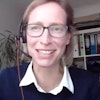Study Notes
GCSE Geography | Opportunities in Alaska (Cold Environments 5)
- Level:
- GCSE
- Board:
- AQA, Edexcel, OCR, Eduqas
Last updated 17 Oct 2024
Alaska is an enormous state, and is part of the USA, despite not being attached to it! It borders Canada and the Arctic ocean. It is nearly 2 million square kilometres and is one of the most sparsely populated places on Earth, due to it being one of the world's coldest and most remote regions. Alaska has around 750,000 residents, made up of indigenous Inuits, and permanent settlers, mainly from Europe. However there are also many economic migrants who travel to Alaska temporarily in search of work with the many oil and mining companies there. Around half of Alaska's population live in the state capital of Anchorage.
Despite the harsh environment, Alaska offers many opportunities for economic development.Mineral extraction in Alaska
150 years also Alaska was known as ‘the gold rush state’ and gold still accounts for 20% of the state’s mining wealth, although silver, zinc and lead mining are also very important. Large gold mines must be managed carefully to minimise environmental impacts due to the toxic chemicals used to process gold ore (such as mercury, cyanide and nitric acid), and as a result environmental campaigners have fought to have some mining developments closed, or even halted during the development phase. An example of this is the Pebble Mine development which was closed down in 2013 by the 'No Dirty Gold Campaign', run by Native American communities. This would have been North America’s largest open-pit mine, however the campaign was extremely effective and led to fifty businesses refusing to buy gold from the Pebble Mine - and as a result mining giant Anglo American decided to cut their losses and walked away from their half a billion dollar investment.

Fishing in Alaska
Alaska has 3,000 rivers, three million lakes and 10,686 kilometres of coastline so is able to support a huge fishing industry. Two types of fishing take place in Alaska...
Firstly we have commercial fishing, fishing mainly salmon, crab and whitefish – this is a huge sector and accounts for 10% of all jobs in Alaska, employing 78,500 people, and generating $US6 billion to the Alaskan economy every year, although some of the jobs are seasonal.
The other type of fishing is subsistence, and is usually done by the Native American communities who are dependent on fish for lots of things, including food, oil (for fuel), and bones (used to help make clothing and tools). Alaska’s fisheries are widely viewed as a successful example of sustainable management.

Energy development in Alaska
Energy production provides thousands of jobs across Alaska, particularly in the oil industry. However there has also been significant investment into renewable energy sources. Alaska has more than 50 hydroelectric power (HEP) plants, which generate around 20% of electricity across the state, and is the perfect site for hydroelectric power due to the wide u-shaped valleys that were previously glaciated, with huge rivers running through them.
Alaska is also able to generate some power through geothermal energy. This is because parts of the state are tectonically active, for example the coastal areas that form part of the Pacific Ring of Fire. Geothermal energy uses the heat stored in rocks underground to generate electricity - the photo below shows a hot springs resort which is powered entirely by geothermal energy.

Tourism in Alaska
Tourism is a huge employer in Alaska, with up to two million people visiting the state each summer, however much of this work is seasonal and poorly paid. The state has numerous national parks, preserved villages, refuges and monuments and there are historical sites for those interested in the Inupiat and Yup’ik heritage. Alaska also offers many other attractions - fishing, seeing wildlife, whale watching and kayaking. There is also hiking, skiing, rock climbing and sightseeing by helicopter. In addition, many adventure tourists visit to experience off-roading, although this has led to all sorts of problems, such as leaving deep tyre tracks through waterlogged ground after permafrost has melted, which takes the land many years to recover from. Around 60% of summer visitors are cruise ship passengers, from ports along the west coast of North America, such as Seattle in the USA and Vancouver in Canada.

You might also like

World’s Largest Offshore Wind Farm gets Green Light for North Sea
21st February 2015

China's Huge Panda-shaped Solar Farm
3rd August 2017
Resource Management: Energy - GCSE MCQ Quiz
Quizzes & Activities

Geography in the News: Solar panel sales boom as energy bills soar
30th August 2022
